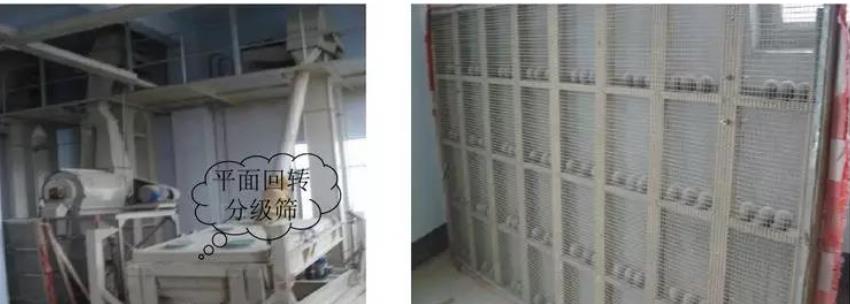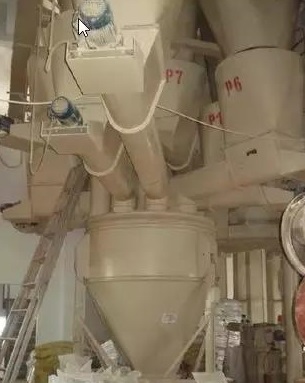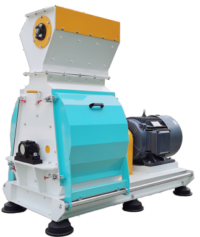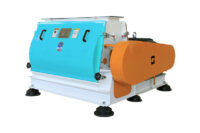
The effective control of each process in the feed production process is the key to ensuring the stable quality of the product. It mainly includes the raw material receiving and cleaning system, the crushing system, the mixing system, the pelletizing cooling system, and the grading and packaging system. The following are the key control points of the production process. I sorted it out for your reference:
First. Feeding
1. The use of raw materials must abide by the following principles, use first, use the old and bring forth the new, and promote safety; the nutritional indicators are consistent with the formula. To
2. Make a “Raw Material Use Record” in time, cross out the used raw materials in time, write the end date, and write the use date of the raw materials that are used.
3. Familiar with the location map of raw materials. The tally clerk should check the raw material requisition plan communicated by the main control room before feeding, and the raw materials with special requirements can only be fed after they are personally approved on-site.
4. Use a skewer to check the raw material pile for heat, insects, and mildew.
5. When feeding, check whether the agglomerated and mildewed parts of the feeding port have been picked up, and if necessary, sample each package for inspection.
6. Inform the warehouse staff in time to check whether the raw materials are put into the barrel or raw material warehouse.
7. Raw materials found to be unqualified shall be immediately prohibited from being used, and shall not be ambiguous, and shall be reported to the production plant manager to reschedule the use of raw materials.
8. For night work, if there is any doubt about the quality, it can be left to the day shift for processing, but it must be followed up.
9. Do a good job in the sanitation of the raw material warehouse and sort out waste woven bags in time.
10. All raw materials used in each class should be filled out in detail on the corresponding form.
11. After each raw material is put in, the scraper should be left idling for 3 minutes to avoid mixing.

Second, Bins.
1. When crushing corn, wheat, and soybean meal, check the crushing condition every 20 minutes to see if there are whole or large particles; sieve with a 14-mesh sieve;
2. Every time raw materials and finished products are imported, it is necessary to check whether the warehouse is accurate, and check whether there is any input in the surrounding warehouses, so as to avoid warehousing;
3. For concentrated materials and powder materials, check whether there are whole materials and whether the color is normal (compare with standard samples);
4. Whether the crushed material has large particles, black material, whether the color is normal, whether it is uniform, and whether the powder content is too high;
5. Whether the size of large particles is too long or too short, whether the color is normal, and whether it is uniform;
6. Check whether the grading screen is operating normally; whether the screen is damaged, check it at least twice per shift;
7. Check whether the distributor is not in place;
8. All raw materials and finished products must be sampled with a cone probe in each shift to check whether there is any shifting in the warehouse or feeding errors;
9. All quality inspections should be recorded in writing;
10. Clean the magnet cylinder;
11. After the finished product warehouse is packaged, the finished product warehouse should be observed in time to ensure that there is no residue.
Third, the ingredients and mixing.
1. Recipe: Check whether the computer input formula is consistent and accurate with the executed formula. Two people (quality control and central control workers) should review the new formula when changing, and other personnel is not allowed to modify the formula at will. When changing to a new formula, the old formula must be recalled, and the raw material warehouse number must be checked for any changes.
2. Batching scale: Whether the electronic batching scale is working properly and whether it is overweight.
3. Liquid adding system: regularly and regularly check whether the weighing system of various grease and water is normal, whether there is a phenomenon that the weighing is not reading or the reading is not weighing.
4. Batching operation: During the batching running process, the automatic state should not be changed to the manual state at will (ie, manual addition from batching). In special circumstances, it must be approved by quality control.
5. Mixing time: Check whether the mixer is working normally and whether there is any leakage or incomplete cutting.
6. Check the uniformity of mixing regularly: the uniformity of mixed feed is ≤10%, and the uniformity of premixed feed is ≤5%. Regularly clean the fuel injector, mixer, and buffer hopper.
7. Randomly check the cleaning status of the mixer when producing different varieties.
8. The quality control conducts a second quantitative inspection of the mixing uniformity of the mixer every year. The mixing uniformity of the premix mixer is ≤5%; the mixing time is 7 minutes.
Four, small material adding port
1. Each shift must check the inventory of the remaining premixes and small materials used at work, check the balance of work, the number of requisitions and consumption of the class, and the error between the theoretical balance and the actual balance shall not exceed 1,000 points. one.
2. Strengthen the supervision of the adding personnel. Each added small material must be accurately weighed on the electronic scale. One person is responsible for the ingredients, one person feeds the ingredients, and one person supervises on-site to check whether the weight and quantity of the ingredients and the name of the product are correct, and the quality control personnel regularly conduct random checks.
3. Check whether the types and quantities of small materials issued by the main control room are consistent with the formula. And confirm on the small material adding record sheet. Check carefully the types of small materials added, such as whether they are agglomerated, damp, and whether the premix is out of date. In the process of adding, check whether the premix is introduced. Check whether the small materials that are prone to agglomeration (such as salt or choline chloride) are sieved before use.
4. The small materials and premixes received in each class should be planned, and not more. When handover, the unused small material varieties will be returned to the raw material warehouse in time.
Five, granulation (pellet)
1. Gelatinization temperature Whether the gelatinization temperature reaches the required temperature (75℃~90℃).
2. The steam pressure of the granulator: Enter whether the steam pressure of the granulator is normal (2.1~4kg/cm2), see “Granulation temperature and steam pressure of various varieties”. According to the granulation and crushing situation, check whether the granulation frequency is too fast.
3. Appearance of hot granulated material: Whether the surface is smooth without cracks, whether the cut surface is flat, etc., whether the length of the material meets the requirements.
4. Whether the cutter is adjusted well.
Six: Cooler
1. Whether the material temperature is normal, under normal circumstances, the difference between the material temperature and the normal temperature is no more than 7℃. If there is hot material, immediately shut it down for inspection and repair.
2. Whether it is cleaned up when changing varieties.

Seven, crumble and sieving.
1. Whether the grading screen is used as required;
2. The operating status of the grading screen, whether the screen is damaged;
3. Check the finished material type, powder content, color, etc.;
4. Check the status of the semi-finished products under the crusher and the return of the sieved powder to the granulating warehouse.

Eight: Packing.
1. Label: The content is correct and the printing is clear. Whether the label date is accurate and whether the label is sewn on the upper left corner of the front of the package.
2. Packing bag: the content is correct and the printing is clear.
3. The label, packaging bag , and feed species are consistent;
4. Quantitative packaging: spot check and record (according to corporate standards);
5. Finished product sensory: review the finished product’s particle size, odor, color, powder content, and powdering rate to see if it is qualified, and check the final pass when the finished product is put into the warehouse. Each product must be sampled and retained for comparison.
6. Recycled material: each time a finished product is changed, whether the head and tail material are pulled off or returned to the machine according to the regulations (generally the first 2 packages, if the powder is not high or too high, the color is different, pull more or less according to the situation), If there are particles in the returned material, it must be crushed before returning to the machine;
7. Sewing thread: check whether the thread is straight, whether there are any skipped stitches, and whether the thread is used according to the specified color;
8. Delivery: Check whether the finished product is delivered first and whether the warehouse is leaking or polluting.
Once the workshop operators or quality control personnel find that there is a quality problem in a certain link in the production process, they will stop the machine first, and the relevant departments of the quality management department will immediately look for the cause, conduct research, and analysis on the unqualified products produced, and formulate a return to the machine plan. The production department will return to the machine according to the return plan, and quality control follow-up supervision and inspection
For more details of animal feed mill machines, contact us online at WhatsApp +86 153 7309 2014. www.chinafeedmill.com






Leave A Comment